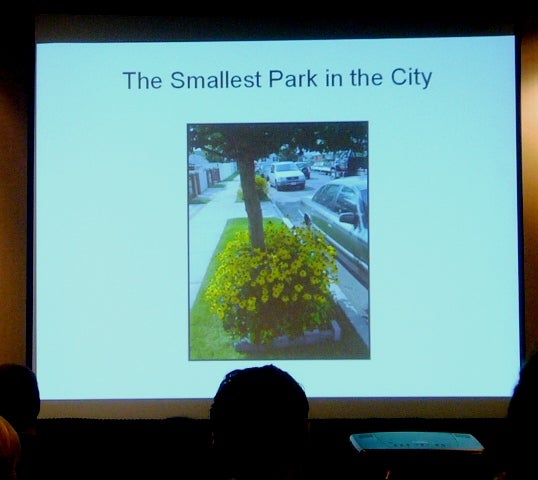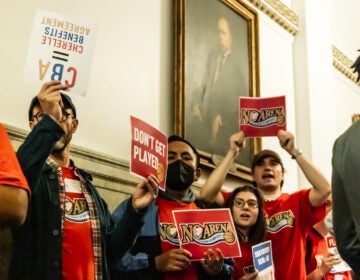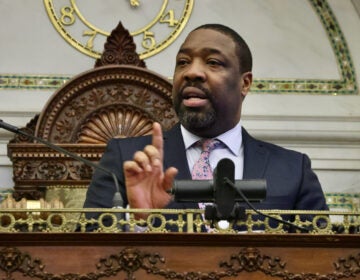The value of urban open spaces

March 26
By Thomas J. Walsh
For PlanPhilly
Jack Linn is a New Yorker and a former taxi driver, and true to form, his ability to crack wise is acute.
That’s a plus for an afternoon audience of conference-goers digesting a buffet lunch.
Linn, who these days is assistant commissioner and senior counselor for the New York City Department of Parks and Recreation, spoke to a breakout session Wednesday at the Philadelphia Marriott. The three-day city planning conference, “Reinventing Older Communities: How Does Place Matter?” is sponsored by the Federal Reserve Bank of Philadelphia.
He was joined in a discussion about urban open spaces and parks by Peter Harnik, director of the Center for City Park Excellence at the Trust for Public Land in Washington, D.C.
Linn told the room that New York’s five boroughs are managed through 59 community districts and 198 neighborhoods – “the basic building blocks of city planning” – and that plans for open spaces in the city are orchestrated through them.
“In my city, they get it,” Linn said. “We are in the real estate business, and in New York, we are the big dog. Compared to us, Trump is a chump! We define the face of the city.”
The Trump line earned him a big laugh, but his point was common sense. Well-maintained parks create value for homeowners and turn neighborhoods around. Even very tiny, stranded pieces of concrete can be greened. Linn said there are 2,300 examples of inexpensive micro-parks created during his time with the agency, with plans for 700 more.
“Make the city bloom,” he encouraged attendees. “Make community gardens. There’s always something you can do, no matter how small your city, no matter how small your budget.”
The flip side of that logic can be seen with new kinds of parks emerging from “exotic” locations or origins, such as rooftops, seawalls (the Big Apple is a city of islands, he said, with only the Bronx situated on the mainland), river pilings, decks and tunnels. Examples in different stages of development include a new site at Battery Park that is over a subway tunnel; the East River Park (a seawall); and Carl Schurz Park (incorporating piers and decks over East River Drive).
“These things are all expensive,” Linn said, citing the $100 million price tag for the four-acre East Side Park, just south of the United Nations building. “I do not recommend any of these parks. They are expensive to build and complicated to maintain.” They can also be jurisdictional nightmares, he added.
“The ideal park system is one you can afford – in bad times. Make the most of what we have. Complete unfinished parks. Open more schoolyards as public playgrounds.”
Harnik spoke on a more macro level, highlighting exemplary parks in Pittsburgh, Baltimore and Atlanta. Overall, excellence among all American city parks peaked in 1945, he said, when the rise of suburban sprawl took attention away from grand outdoor urban spaces.
His examples – The Point in Pittsburgh, Patterson Park in Baltimore and Olympic Centennial Park in Atlanta – were chosen because all of them fit the theme of the conference. Each involved the city’s reinvention efforts to one extent or another, and all are examples of bottom-up planning, a concept championed by Valentino Castellani, the former mayor of Torino, Italy, and a guest speaker during the conference’s morning sessions.
“Reinvention discussions must include quality of life,” Harnik said. “The park community must be part of the overall planning process. Economic development folks need to think about parks, and vice-versa.” Too often, he said, park enthusiasts, whether they are professionals or community activists, tend to get caught up in the virtue of their cause.
The panel was moderated by Joan Reilly, senior director of the Pennsylvania Horticultural Society’s Philadelphia Green program.
Contact the reporter at thomaswalsh1@gmail.com
WHYY is your source for fact-based, in-depth journalism and information. As a nonprofit organization, we rely on financial support from readers like you. Please give today.






